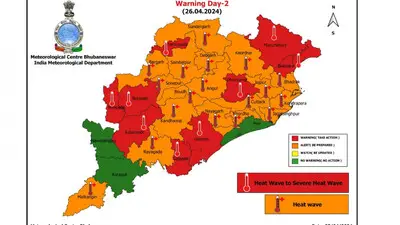Recommended Stories
New Delhi: Stressing upon maintaining quality in service delivery of family planning products, the Health Ministry on Tuesday launched a slew of initiatives, including injectible contraceptives, in the public health system.
Deoxy medroxyprogestrone acetate injections will be able to prevent pregnancy for three months and will be available among other alternatives to prevent pregnancy.
To bring down the Total Fertility Rate (TFR), the ministry has launched 'Mission Parivar Vikas' with a stratified approach for substantially increasing access to contraceptives and family planning services in the country. The launch coincides with the observance of World Population Day, observed on July 11 every year, to raise awareness of global population issues.
The ministry has identified 146 high fertility districts, where the TFR is 3 and above, spanning across Uttar Pradesh, Bihar, Rajasthan, Madhya Pradesh, Chhattisgarh, Jharkhand and Assam.
With around 28 per cent of the total population in India, these districts contribute to around 30 per cent maternal deaths and 50 per cent infant deaths.
For a stable population, a country needs a TFR of 2.1.
"There is need for rightful implementation of initiatives in India. We need to eliminate the 'chalta hai' (casual) attitude in services delivery system," Health Minister J.P. Nadda said while launching the initiatives here.
Nadda has also sought a review report of implementation of initiatives in every six months.
The government has expanded the basket of choices under family planning, which now include injectible contraceptives under a programme named Antara, followed by Progesterone pills and centchroman pills.
According to experts, currently only 6 per cent of the health ministry's budget is spent on family planning, which is not enough.
Problems due to the rising population are believed to further grow because India -- with a 1.3 billion population -- has approximately 17 per cent of the world's population but only 4 per cent of world's renewable water resources and resides on 3 per cent of earth's land area.
The total water consumption in India is expected to rise by 20-40 per cent over the next 20 years.
According to National Population Stabilisation Fund, India is in the middle of a demographic transition, both fertility and mortality rates have started declining throughout the country, though the pace and magnitude of the decline varies considerably across its states.













